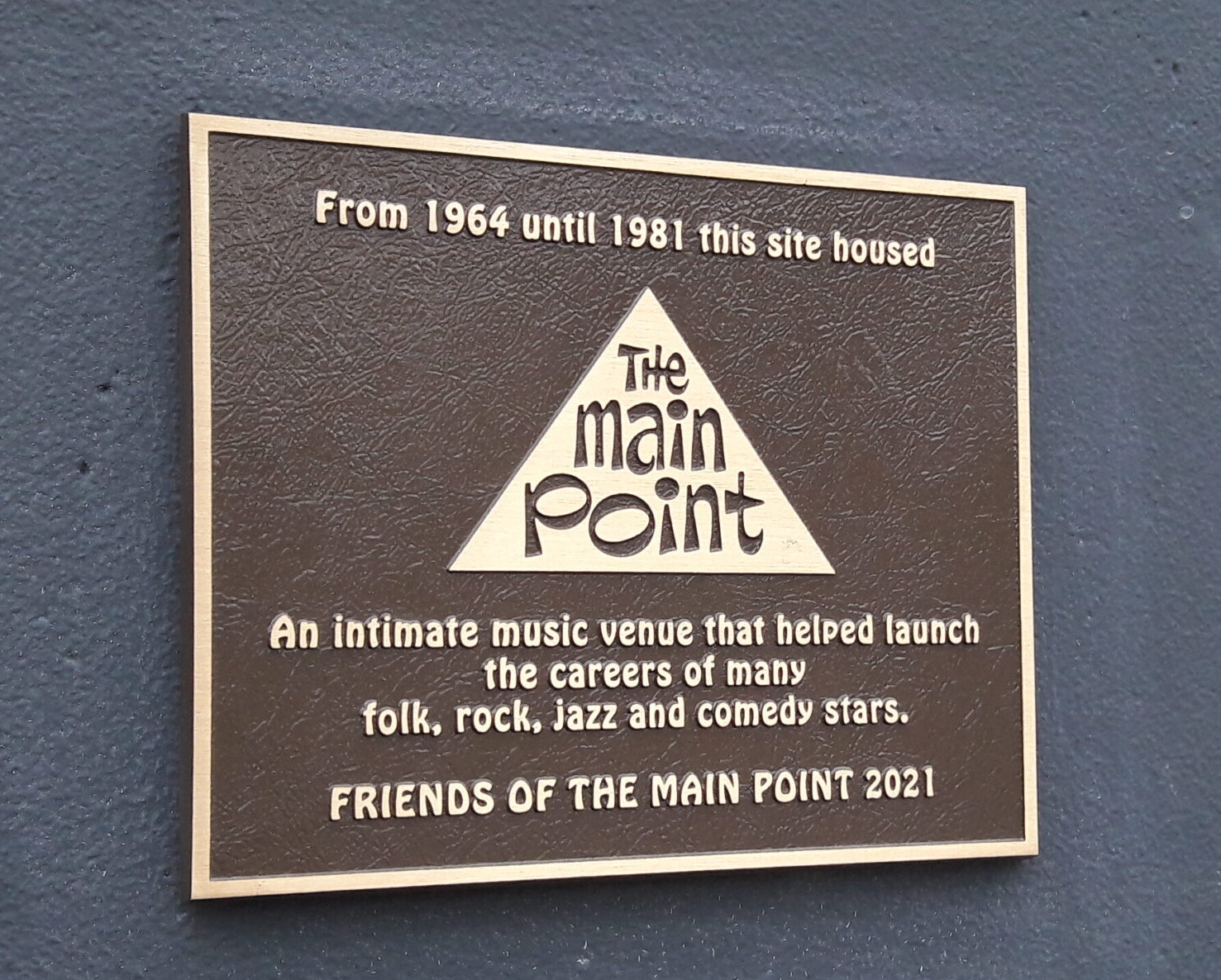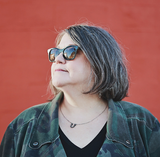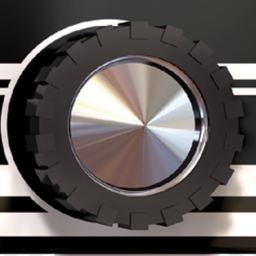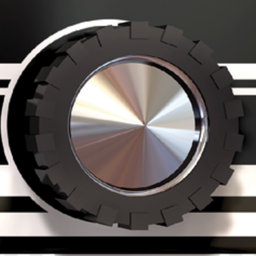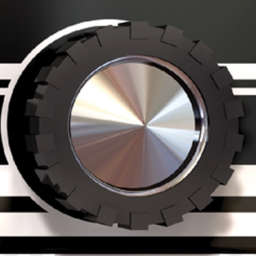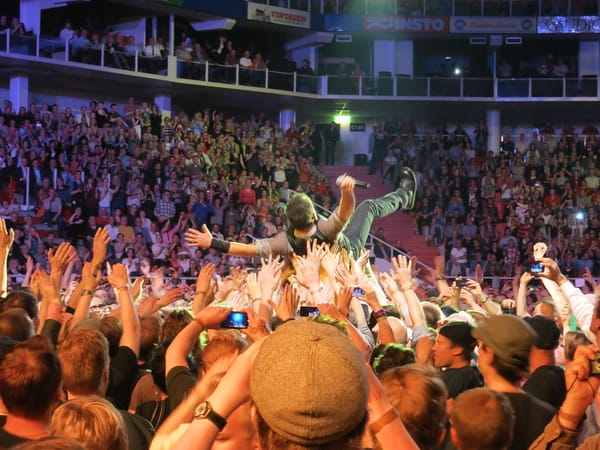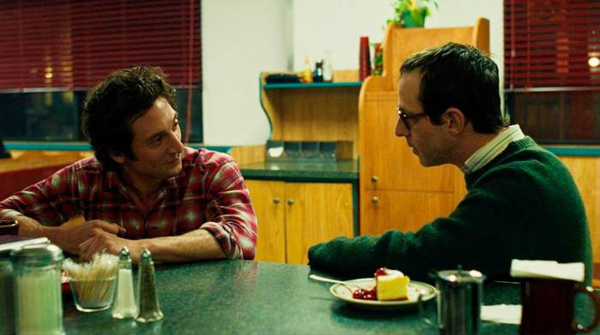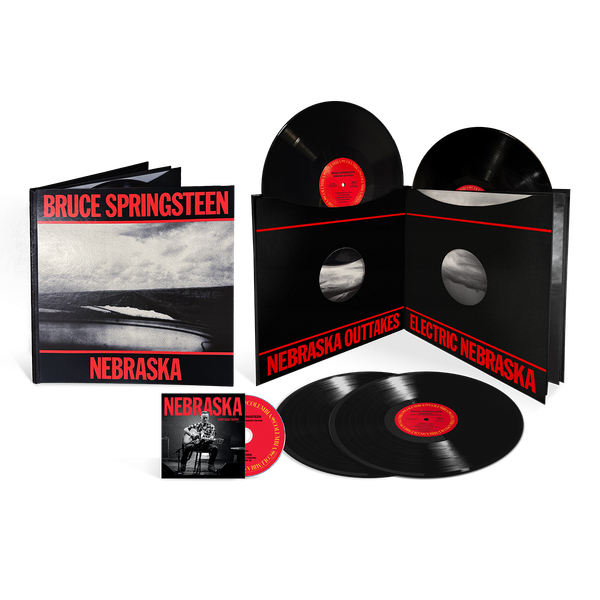Bruce Springsteen & the E Street Band, The Main Point, Bryn Mawr, PA, February 5, 1975
Let’s welcome home to the Main Point, and to WMMR, one more time: Bruce Springsteen and the E Street Band.

Setlist: INCIDENT ON 57TH STREET / MOUNTAIN OF LOVE / BORN TO RUN / THE E STREET SHUFFLE / WINGS FOR WHEELS / I WANT YOU / SPIRIT IN THE NIGHT / SHE'S THE ONE / GROWIN' UP / IT'S HARD TO BE A SAINT IN THE CITY / JUNGLELAND / KITTY'S BACK / NEW YORK CITY SERENADE / ROSALITA (COME OUT TONIGHT) / 4TH OF JULY, ASBURY PARK (SANDY) / A LOVE SO FINE / FOR YOU / BACK IN THE U.S.A.
The E Street Band at this moment is Roy Bittan, Clarence Clemons, Danny Federici, Garry Tallent, and Max Weinberg. Suki Lahav appears as a guest musician.
Venue capacity: 200-280, depending on who you ask
Good evening, ladies and gentlemen, welcome to the Main Point. I’m Ed Sciaky from WMMR. And with the help of Mom’s Wholesome Audio, we are very happy to be able to share with people all over the Delaware Valley what is a very special evening. Bruce will do a gig tomorrow night and Friday night at Widener, and they’ll be his last two performances in Philadelphia for a few months as he goes off to conquer America and the world. Tonight’s a special farewell to the Main Point from Bruce, as a benefit for the Main Point. Let’s welcome home to the Main Point, and to WMMR, one more time: Bruce Springsteen and the E Street Band.
The audience’s applause is loud, much louder than the actual capacity of the Main Point – between 200-270 depending on who you ask – would suggest. Then you hear a few tentative violin notes and the entire place goes instantly dead silent. A few more stray notes, a piano chord or two, and then the song formally begins.
“Incident”’s opening is a construct, there’s a prelude where you hear the faint echo of a unreleased song known as “Wings for Wheels” (that we’ll hear later in the set) before the slightest of pauses and a transition into the song’s circular opening motif. The crowd recognizes it and applauds lightly, like there was a collective agreement to not make too much noise and disturb the magic.
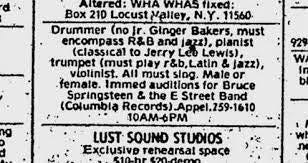
Then the violin, pure and high and lonesome, crystalline pathos that is instantly, immediately riveting. It’s novel but it’s not in opposition to the song’s essential nature so it just feels special. For listeners out in radioland, you’d only know there was a violin in the E Street Band if you’d seen them live since October. The violin belongs to Suki Lahav, the wife of recording engineer Louis Lahav, who’s been working with Bruce and manager/producer Mike Appel on getting the songs down for Springsteen’s third album. (Of course, it’s much more complicated than that simple statement sounds, but we’ll get to all that later.) Bruce had been looking for a violin – it was one of the asks in the Village Voice ad that produced newcomers Bittan and Max Weinberg, both of whom only came on board about six months ago – and after not finding anyone else he liked, Suki began performing with the band (but was never actually a member) in October of 1974.
And then: Spanish Johnny drove in from the underworld last night.
It’s just Bruce and Roy right now. Bruce’s vocals are just the tiniest bit conversational, but he’s not talk-singing, he’s absolutely singing, but there is an extra degree of tension in his delivery tonight, there’s a rawness that immediately calls you to attention if you somehow weren’t already. Even the shittiest version of this tape always felt so open and direct, he sounds so close to you.
And from out of the shadows came a young girl's voice - Bruce adds, in a whisper: “Johnny!” before going back into the verse.
Said, "Johnny, don't cry"
And Johnny sighed, Puerto Rican Jane
The violin is back, the countermelody underneath the vocals until the end of the verse. The piano is background, it’s impossible to compete with the exquisite tension of the violin and the manner in which it is almost another character in the song because of its emotional dominance. It stabs you right in the heart.
Upstairs a band was playing, the singer was singing something about going home
Bruce has never sung that line better, with more depth, with more longing.
In the last verse, singing about Spanish Johnny and Janey’s conversation, Suki’s voice comes in, echoing the “those romantic young boys” line. The clarity of her soprano is astonishing but what she’s doing here is bringing Janey’s actual voice into the song without making it into a duet, which would feel more like a musical than a rock ballad, it would be hokey, whereas this is just flat out gorgeous.
The violin comes back at the beginning of the last chorus and the piano comes back in with more prominence, both of them underscoring Bruce’s wordless vocalization that’s just helping the song move along.
Then the two of them, Suki and Roy, continue the duet into the closing motif of the song, and instead of it tumbling straight into “Rosalita,” it concludes with the layering over of a recording of a police siren, a device that he’d begun using the previous year. In the days before we knew everything and had tapes of everything so easily available, the debate was always whether or not that was an actual police car that just happened to be driving by but it was always so obvious that it wasn’t, it was a way to punctuate the song and give it the definitive end within a live context.
There is so much pent up enthusiasm and excitement in the applause at song’s end. It’s tangible.
Part of the magic of the Main Point show is the venue itself. The Main Point was a coffee house in Bryn Mawr, PA, 15 miles northwest of Philadelphia. The venture was a homegrown affair, founded in 1964 because the owner(s) wanted a better venue to watch folk music. It didn’t have a liquor license and served things like “hot honey lemonade” and gingerbread cake with whipped cream. The seating looked a lot like old-timey school desks (and may well have been). The venue single-handedly launched the career of Bonnie Raitt and many 70’s folk musicians speak fondly of it. Warren Zevon loved it so much that he changed the lyrics of “Werewolves of London” one time to “Werewolves of Bryn Mawr.” Bruce Springsteen played 45 shows (some of which were early/late show combos on the same night). They clearly loved playing there.
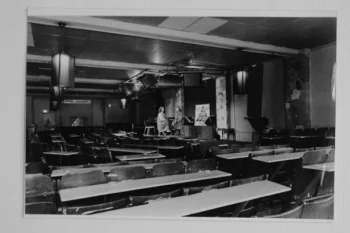
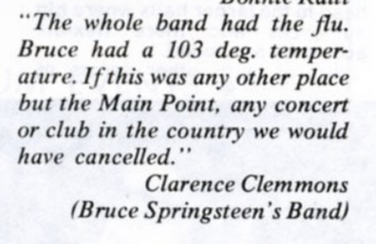
Inside of the Main Point | Quote from a 1974 tribute zine about the Main Point
The late Jeanette Campbell, sole owner of the Main Point by the time of the ‘75 show, wasn’t a fan of rock and roll music but she understood that she needed to book those kinds of bands in order to keep the joint going. It was a venue that cared about music and musicians and music fans and it was rewarded by a fierce loyalty from the people that worked there, played there, and attended shows there. It was a warm-sounding venue which clearly made it a dream to do a live remote recording from. But it wasn’t a highly profitable venture, which is why Bruce is playing a benefit for them tonight.

But the other major non-performance aspect of this show that makes it so memorable is the audible (or rather, non-audible) respect from the audience. Unlike the December '75 show in Toronto , the audience here isn’t quiet because they don’t know the show because they’ve never seen him before. The audience at the Main Point is quiet precisely because they have.

When WIESS was first released, the Philadelphia market was responsible for more than half of the record’s total sales. A lot of credit for that goes to Ed Sciaky, our host for the evening, an early champion who had to be limited to only two Bruce songs per on-air shift (“I had quickly become a crackpot of a fan,” Sciaky told Backstreets in 2005.) But a DJ can play an artist as much as they want, they still can’t force an audience to become fervent fans. Philly just got Bruce at an elemental level, and it’s why the 200+ people in the Main Point that night didn’t act like a bunch of jerks. They knew this was special and they behaved accordingly.
“This next song… it’s a very noisy song!” One of the canonical E Street covers, it’s “Mountain of Love.” This song gets attributed to Harold Dorman, who originated it, for sure, but it was the Johnny Rivers version that charted in 1964 (with the Wrecking Crew behind him, no less) and I assert that is the version that the E Street Band are playing. Handclaps, backing vocals, Clarence’s rich baritone, the Professor’s solo before the Big Man coming in with the sax, Max’s drum rolls -- it is everything that was beautiful and joyous about the E Street Band in this era (or any era, to be honest) and all of this is the reason that “Mountain of Love” from this show became such an infamous, you gotta hear this cover. (More on this here.)
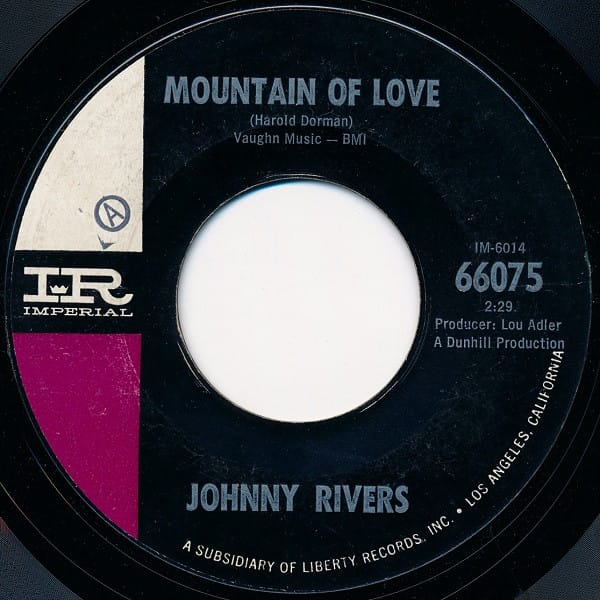
“Born to Run” comes next, and despite the fact that the record that it will end up being the title track for won’t be out for another seven months, it’s already a big moment. That’s because everyone in this audience has been listening to Ed Sciaky playing it constantly since Bruce brought him a copy back in November. Then-manager Mike Appel, trying to keep his client alive at a record label who was none too pleased that his first two records didn’t sell and that the third one was taking so goddamn long to finish, decided that the best way to both keep the audience happy and annoy Columbia Records was to do things like send copies of songs to friendly DJ’s in Springsteen markets around the country. You can’t really drop an artist -- or you’d look really dumb -- if Kid Leo in Cleveland, then one of the country’s leading DJ’s in one of the country’s strongest rock markets on WMMS, is playing an unreleased song every Friday at 5:55pm to herald the start of the weekend.
This nascent version of BTR here at the Main Point is already a steamroller, though, making you sit up and pay attention. The song has been in setlists for a little while -- the earliest documented appearance is April 1974 -- despite it still being something the band were working on regularly in the studio. It is also absolutely lacking finesse and is a little more black and white than the finished product would be. Did everyone listening know then it would turn into a national anthem? Probably not. But they sure liked the song and they probably really liked the fact that they were hearing a song that wasn’t on record yet but that they knew about because they’d heard it on MMR. It’s the kind of thing -- like “The Fever” -- that you’d make sure to tune in to certain Springsteen-friendly DJ’s just in case. Secret squirrel stuff.
While the applause is dying down, it sounds like Bruce is calling an audible with the next one -- you can hear him talking to the band off-mic -- and it’s a chance to catch a breath while he sets the scene, invokes the lore. But as soon as that burbly into organ surfaces, there’s absolute shouts of recognition. Max hits the hi-hat, the other organ that’s definitely Danny Federici slides in. There’s some clapping along from the crowd, and then Garry Tallent comes in.
I gotta tell ya, the way I ran into this guy, here, the way I met this cat was -- it was like -- I don’t know if I should -- it was like 3, 3:30 in the morning, in Asbury Park -- people are clapping at the mention, which they’re allowed because there’s a strong chance that they have actually been there -- all the bars close down, and it was a night like last night, except that it was raining, the wind was blowin’, and I was down by the Prince, remember that -- you hear Clarence’s deep but non-specific agreement -- I was down by this place called the Prince and there’s nobody else on the street.
There’s wind, there’s rain, I had on my jacket -- he must realize that this won’t do, because he clarifies -- this is my fancy jacket, I had my other jacket on, bundled up and about three blocks down, way down the street, I see this FORM coming towards me, and so I get a little closer, and I say, I don’t wanna take any chances, and walk on the same side, and when I crossed the street, he crossed the street. So I tried to make believe I didn’t notice, and so I sorta tried to nonchalantly crossed the street again, he’s getting closer all the time -- and about a block away -- i mean, it’s windy, it’s like, 80 miles an hour, gale force winds -- you can hear someone in the audience quietly murmur “Clarence” -- and down the other end of the street comes this guy, dressed in a white suit and a walking stick, a cane, a white hat with a $100 black leather coat slung over his shoulder, walkin’ real slow in my direction.
We got closer, we got closer, and when we got about half a block away, I was getting real scared so I decide I’m gonna stand in a doorway there and let him pass me by. This cat walks up and stands right in front of the doorway where I’m standing. So I took all the money I had out of my pockets and threw it on the ground. The crowd laughs knowingly. Took my coat off, threw that on the ground. He didn’t budge an inch! He just stood there with his hand on a diamond-studded cane… so slowly I sort of eased my hand down to his, slowly i eased it down, and when we, when we touched--
The studied casualness of the way the band is on point, paying close attention, he’s rapping, he’s telling a story, but as soon as he says SPARKS! to drop into the first verse they are right there.
In my mind, I always visualized this story as Bruce was walking south down Kingsley towards the Student Prince so that Clarence was silhouetted against the horizon of the open water, but now that I am writing this I am realizing that it was probably the opposite because during the time Bruce wrote “E Street Shuffle” was during one of the brief times Bruce Springsteen actually resided within the actual Asbury Park city limits (and not in Wanamassa or Bradley Beach), when he lived on top of the beauty salon that was in that stretch of Cookman Ave. that was a couple of doors down from the Upstage.
Clarence’s “Detroit. Muscle.” is, like, Isaac Hayes-level cool.
The first time I heard this slow walk version of “Shuffle” I wasn’t sure I liked it, because it is absolutely, totally a different song in this form. “Shuffle” on the album is the Jets and the Sharks dancing in the school gym. But live, back in the day, it owes more to Van Morrison and Mad Dogs and Englishmen and we know that is deliberate, because Bruce has talked about his admiration of both of those artists in that time period. I once spent a month listening to live Van Morrison shows from 1975 because someone uploaded a bunch to DIME and when I was done, I still wasn’t a big fan but man, I had a greater understanding of this era of E Street.
There’s a guitar solo in there, and it both embodies the same lagniappe as the rest of the song and still contains hidden power, like Bruce is holding himself back. But the whole thing is a journey. Listen to Clarence’s solo at the end, it is straight out of “Into the Mystic.”
The piano intro to “Wings For Wheels” gets enthusiastic recognition. The only problem with that is this song didn’t even truly exist until November of ‘74, and although there are documented shows with confirmed setlists in the intervening time frame, none of those shows included “Wings for Wheels.” In fact, tonight’s radio broadcast almost didn’t happen after Bruce arrived at the club and got cold feet at the idea of playing unreleased material that was still evolving to a radio audience, and it took a lot of work on Ed Sciaky’s part to convince Bruce to let the broadcast proceed. There are many reasons we should be grateful to the late Ed Sciaky and this is one of them.
So “Wings for Wheels” is absolutely a very good song in this early form. It’s just not a great song yet.
We’re gonna trade on your wings/for wheels | boom boom
It’s so cheesy, which is not an adjective I would ever apply to “Thunder Road” as we know it.
If you’re not up for listening to the whole show -- although if you’re a subscriber to this newsletter, you really, really should -- at least listen to this one song because it is instructive and educational and kind of miraculous to contemplate how he got from this version into the one we all know? I love reading Bruce’s first drafts -- I had one on my bulletin board for years with lyrics about the bunnies returning home from the rain -- because it was a reminder that art is a process. I mean:
but i got this old car and she’s pretty tough to beat
this is a town full of losers and baby i was born to win
The bridge here is out of fucking nowhere. It sounds like a carnival midway, Clarence blowing high and bright, and you will not recognize it if you have not heard this before. More than anything else, I think that this version “Wings for Wheels” is an astonishing open window into this particular moment of Bruce Springsteen’s musical history and I’m so grateful it exists for that reason.
Springsteen’s Dylan fandom is on display next with a stunning interpretation – this goes far beyond a “cover” – of “I Want You” from Blonde on Blonde. “I Want You” had the briefest of shelf lives within the E Street timeline that coincides with Suki Lahav’s tenure in the band, which makes sense because the song without her violin would be beautiful but not exceptional. Bruce orchestrates a version of the song with piano and melodica and violin that wouldn’t have been out of place a year and a half later on Dylan’s Rolling Thunder tour, but the instrumentation, with the mix of both Danny Federici and Roy Bittan and their wildly disparate approaches, is probably closer to something the Band could have managed to manifest.
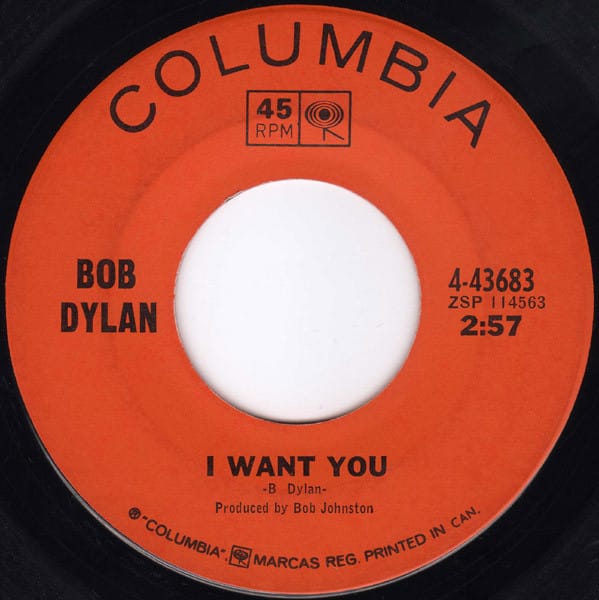
Bob himself played the song live for the first time at the SNACK Benefit in 1975, and then in a handful of dates on the 1976 continuation of Rolling Thunder and I’m sorry, it isn’t as good as this one. The versions in 1978, which happened to feature a flute and a saxophone and some of the Rolling Thunder musicians, are also interesting to compare with this version in my head. Who knows who took what from who or if it is simply some kind of logical, inevitable extension based on the way the song was written. But when you consider that Bob’s influence on the 1978 tour was Phil Spector’s Wall of Sound, that theory sounds a lot less crazy given that Bruce was at the time this was being performed trying to manifest his own Wall of Sound.
- end digression -
It’s the perfect onramp to a 1975 “Spirit In The Night.” This is probably where I should mention that the first bootleg record I ever bought, by anybody, was a copy of You Can Trust Your Car To The Man Who Wears The Star, which is the '75 Main Point show. This is what my version looks like. I know it says 1976. Not for the first time, the bootleggers were wrong, or trying to throw people off.
I think I paid $75 for it sometime in the late 70’s and I wore this thing out. When we moved onto CD-Rs it was one of the shows I would make copies of for friends who were Bruce fans but weren’t obsessives. A lot of folks don’t like bootlegs because they don’t like the crowd noise and your average civilian is not going to put in the effort to figure out which version of a show they should download. (Old-timers still show up on social media to ask what the official soundboard shows “sound like.”) But unlike most of the early shows that circulate, it was an FM broadcast at a small, warm-sounding venue and it was highly listenable even before the tapers improved it.
I used to dream about seeing this version of “Spirit In The Night” live, because of this intro, cacophonous, spooky and evocative. The song itself is fairly polished performance-wise at this point -- even despite the newer members of the band -- because it’s been around, relatively speaking, it’s the kind of world-building showpiece that was at the heart of the live show in the early years. But they’re now in the era where that will begin to change and evolve. “Spirit” will always be a highlight but Bruce will figure out how to compress the energy and the impact into a more compact form.
Despite it being a new and unreleased song, there’s no introduction to “She’s the One” except for the clearly amazed dude exclaiming, “She’s the ONE!” right after “...that no boy can fill.” Philly diehards, man, god bless. STO made its live debut at Avery Fisher Hall the previous November and musically it is mostly the exact same one we already know, an incendiary fulfillment of the promise of the Bo Diddley beat from the time it was first created. The sax solo goes longer, is a kind of maelstrom, a squall coming in and leaving. Bruce is still working on the lyrics, but it is already essential. And the band members singing the backing vox on the chorus is one of my favorite E Street Band moments, ever. He namechecks the song twice during the rapturous applause at the end, just so everyone knows what they just heard.
He begins the guitar melody for “Growin’ Up” and then Roy joins in. It, too, is one of the old-timers compared to the fledgling BTR numbers. “Saint in the City” is a fucking locomotive, there is muscle and brute force and Clarence’s sax absolutely dominates, until the Guitar Slinger of Central New Jersey decides to remind the region that he hasn’t forgotten about that title. It’s all just fantastic.
There’s some tuning, a pause and then Bruce whispers into the mic: “Way down… in Jungleland.”
The same six people who applauded “Wings for Wheels” clap, but unlike the other Born to Run songs that were performed tonight, “Jungleland” was already a legend, an entity on E Street. Bruce is still working out the lyrics and the arrangement; on the bridge, there’s a collision between Bruce’s guitar solo, Clarence’s sax and Suki’s violin, and at first they all seem like they’re flailing but after a while it all works itself out. By the time we’re at Roy’s piano interlude before the last verse, it is literally heart-stopping. It is always heart-stopping, though. It’s “Jungleland.”
“Bruce asked us to tell you that…’Kitty’s Back,’” says the one of the coolest motherfuckers to ever walk the planet, before his sidekick ignites a five-alarm fire, and then the rest of the band come along with their containers of lighter fluid. In particular, the back and forth of Roy and Danny is historic, phenomenal, astonishing. Don’t get me wrong, I loved David Sancious and the space and swing he possessed, but there is something about the Federici-Bittan pairing that is, and was, unique. Danny was all feel but Roy was bold and measured, and the combination of the two is part of what elevated this mark of the E Street Band.
As textured and jazzy as the rest of the show is, “Kitty’s Back” is fucking jail guitar doors clanging. Clarence comes in and shadows the melody which just gives Bruce cover to torch the joint. The furious, spinning joy of that last chorus – it’s the place where the casual fan gets lost during a live show and I look for the faces that are full of rapture because I know they are the old timers. The audience at the Main Point are audibly and justifiably losing their shit at the end.
That’s the end of the main set. “Nowhere near finished,” to quote the DJ who comes in for a station ID. “Might as well take a moment and remind you there are a whole bunch of tickets left for Widener College - the Thursday night performance, that one’s not sold out yet by any means.” No one has ever wished harder for a time machine than anyone listening to this show in any era.
“New York City Serenade” is a sentient being, it is alive. The introduction is closer to Sun Ra than it is anything in conventional rock and roll, and it’s not necessarily the most effective way into this particular song but I admire so much their willingness to try and build the kind of setting they think this song deserves. When it explodes into the main melody line, and there’s Suki up front, you feel like your heart will break.
Bruce’s pacing and timing and delivery is otherworldly, and then the rhythm section swing into a lockstep closer to funk. But it’s the arrangement on the choruses, the majesty and the grandeur. And this rendition reminds me of how Dave Marsh once wrote about Bruce’s relationship with New York City: “Springsteen does not know the City well. These songs have less sense of place and physical detail than, say, the New York Dolls’ demimonde epics. What he does know is the sort of person for whom the place has killer depths, for whom this town chokes off all that’s young and beautiful, whom the town uses its own beauty to destroy.”
One might read that as a criticism but it’s not, it’s an accurate and completely correct read on the perspective in a song like “New York City Serenade” or even “Incident.” People who aren’t from NYC have a different relationship with it than you do if you are from there. You see different things, you don’t take anything for granted. Bruce never wanted to live in New York but he absolutely appreciated the freedom he felt there, which is what I hear in “Serenade.” In the 70s especially, Manhattan was a vast place that held many keys to many kingdoms, and somehow Bruce Springsteen has fit all of them into this song.
Then there’s that little interlude towards the end where he is improvising, both melodically and lyrically, like it’s a direction he wanted to take the song, or it’s another song we never got to hear.
“I just got this new stereo -- giggle -- and painted my place,” he shares.
“there’s a joker selling dreams on the corner that can’t come true / i bought ‘em too, at night i bought ‘em too … tv’s with the sound turned off.”
It’s an improvisation that’s closer to spoken word poetry, to what a bunch of kids are doing at the corner of Bleecker and Bowery.
“Hey mister, you got a girlfriend? Hey mister, wanna go out tonight?”
It sounds like Bruce has climbed inside of the microphone and is talking to you, he’s inside the radio, he’s in your ear, he’s inside your brain, it’s close and intimate and then Roy and maybe also Danny are hitting these dissonant chords while he improvises vocally, Clarence is holding down the bottom along with the rhythm section and then it all fucking explodes like a supernova. It is powerful but it is also so incredibly emotional and moving. I have listened to this bootleg so many times, for a long time it was one of the only live shows I owned so I held onto it for dear life. But it’s 50 years later and it is still having the same impact. It’s crazy. Is there a better or more definitive version of “New York City Serenade?” I honestly do not think there is.
“Ed Sciaky, are we on the radio right now?” Bruce asks. Ed starts to explain there’s a delay. “Does anybody want to say hello to their mother?”
And then he literally passed the mic around for a minute or two, resulting in such memorable shoutouts as:
“Say hello to Kenny in the Northeast!”
“Hello Mom! Hello Dad!”
“Hey Moe in Manoa!”
“This is a lot of fun, we gotta do this all the time!” Bruce says, sounding at least halfway sincere.
“Rosalita” is up next, and Rosie will go on for 12 minutes because we need to introduce the band. We need to play “The Theme from Shaft” for Clarence. We need to make jokes about Max being from North Jersey. How did anybody not like this band? How did anyone ever agree to go on after this band?
12 minutes later, as the band tunes up for the next number, you hear the accordion coming out so everyone knows what’s up next, Bruce says, “Well, we are on the radio, right, Ed? Is Ed here? I only believe Ed Sciaky.” Bruce then tells the audience about how the radio broadcast didn’t happen, that he’d called him saying, “I don’t know, man, we ain’t played in a while, I don’t know if we should be on the radio.” and that Ed’s response was along the lines of, “They’re gonna riot! They’re gonna wreck my radio station! I’m gonna lose my job! Santa Claus ain’t gonna come next year!” and that it was only because of Ed Sciaky.
“Sandy” is a rendition of excellent vintage, but this is the one number Suki Lahav contributes to vocally that I think is overkill, it is just too much. “A Love So Fine” – the predecessor to “So Young and In Love” – is more lively encore fare and as always, a great solo platform for the Big Man. This segues straight into “Shout!” and then back into the song.
(I know there was better material from this time period but I always felt that “So Young and In Love” should have seen the light of day. I understand why it didn’t make it onto Born to Run -- it could have fit but it would have been a distraction -- but it should’ve made it onto The River. )
The crowd is cheering so loudly there’s distortion, they are clapping in unison, asking for more.
A voice steps up to the mic: “That’s it, thank you, good night, we love you,” and then maybe no more than 15 seconds later: “It isn’t it. He’s back.”
“For You” into “Back In The USA” is one of the oddest encore pairings that one could think of, possibly, but not that unusual in this time period, and it is apparently a birthday dedication -- during one of the earlier crowd interludes you heard people asking for it -- and I remain hard-pressed to understand how a song about suicide is what you’re going to ask for your birthday but man, this version of this song is brutally, perfectly executed. As a performance, it’s simply stunning. Most of the versions of “For You” in this era are at a similar level and that’s probably why it was -- and still is -- such a popular request.
“Now we’re gonna bust out the bar material,” Bruce says. “That could be dangerous.” There’s a guitar riff that is definitely in the neighborhood of Chuck Berry, and then:
All I wanna say, Clarence...I’m so glad to be living in the USA!
And we’re off into “Back in the USA.” The whole thing is wonderful, Clarence’s sax break is delightful and there’s really nothing better than Roy Bittan getting to channel his inner Johnnie Johnson, it is a privilege and a blessing to witness. There are multiple guitar solos, Danny Federici is filling in all the empty spaces while Roy is hitting glissandos down the keyboard, it is a fucking party onstage, but it is Chuck Berry! It is “Living in the USA!” It’s supposed to be a party.
“If I don’t get my daily ration of cheeseburgers…Clarence, we gotta… the boys in the band, we gotta get me there, we gotta take me there, we gotta find ‘em!”
GET ME TO A DRIVE IN, GET ME TO A CORNER CAFE - this is an absolute imperative.
Finally, sadly, regretfully, eight minutes later and it’s all over. Bruce: “Thank you! I want to thank WMMR, and all the people in Philadelphia that have supported our band for so long, I want you to know we really appreciate it. We really appreciate it.” 50 years later, we all do.
